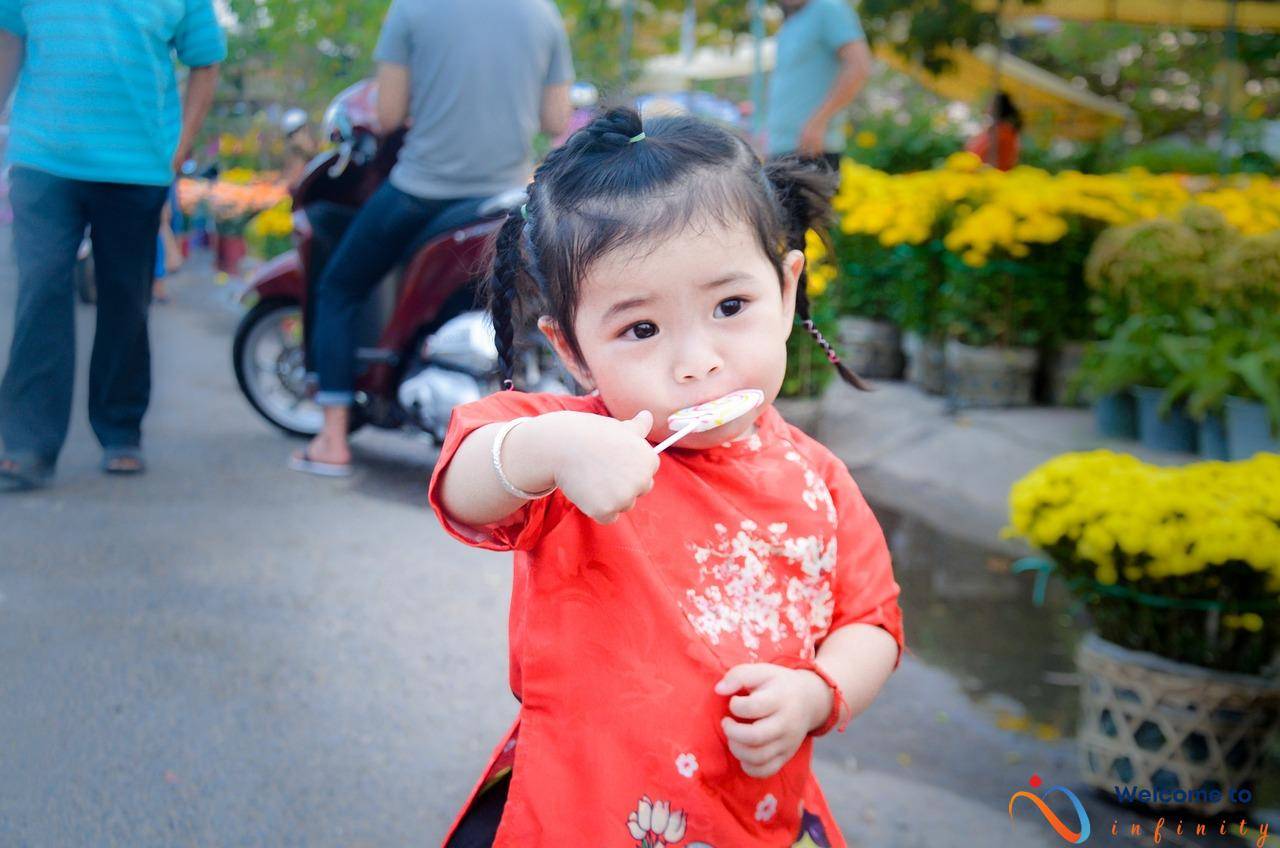Food is a significant part of culture and the way people prepare and consume food often reflects their traditions and customs. The ingredients used in recipes for traditional dishes can tell a story about a culture's geography, history, and agriculture. For example, spices and herbs used in Indian cuisine are influenced by the country's climate and soil, while Mexican dishes often feature corn and beans, which are staples in the local diet.
But cultural traditions in food go beyond just ingredients. The customs surrounding dining have their own unique practices and etiquette. For instance, in many parts of Asia, it's customary to remove shoes before entering a home and to eat with chopsticks and communal bowls rather than individual plates. In contrast, western meal etiquette involves using utensils in a specific order, engaging in conversation, and passing dishes around the table.
Some cultures also have specific festivals and celebrations that revolve around food. In Mexico, the Day of the Dead is a holiday where families gather to honor their departed loved ones with traditional dishes like pan de muerto and sugar skulls. Meanwhile, Diwali in India is celebrated with a variety of sweets and savory dishes, symbolizing the triumph of good over evil.
Food can also serve as a cultural bridge, bringing people from different backgrounds together to share their unique traditions and cuisine. Whether it's participating in a potluck or attending a food festival, sharing a meal is a great way to learn about different cultures and connect with people from different parts of the world.
Ingredients and Spices
Ingredients and spices are an essential part of traditional recipes in many cultures, reflecting their history and heritage. For instance, Indian cuisine is known for its use of aromatic spices, including cumin, coriander, and turmeric, which give dishes their distinctive flavors and colors. Similarly, in Thai cuisine, lemongrass, galangal, and kaffir lime leaves are commonly used to add fragrance and complexity to recipes.
The use of herbs and spices is not only about adding flavor, but it is also associated with health benefits. In Ayurvedic medicine, a system of traditional medicine practiced in India, spices are used for their therapeutic properties. For instance, turmeric is known for its anti-inflammatory properties, while cinnamon is believed to regulate blood sugar levels.
Food and spices can also act as cultural markers, as certain spices are associated with specific regions or ethnic groups. For example, saffron, a spice commonly used in Spanish and Middle Eastern cuisines, is an expensive ingredient that has been historically associated with royalty and luxury. In addition, traditional Chinese five-spice powder, a blend of cinnamon, cloves, fennel, star anise, and Szechuan peppercorns, is used to flavor meats and stir-fries and is a symbol of the five elements of Chinese philosophy.
Moreover, spices and herbs can be used in combination with food classification techniques such as a vegetarian diet or halal meat, depending on the dietary or religious practices. It is important to note that the use of certain spices or foods varies across different regions and socio-economic backgrounds of people in the same country. For example, Mexican cuisine uses chili and indigenous herbs and spices such as epazote and hoja santa that are native to Mexico, whereas Caribbean cuisine makes use of peppers such as scotch bonnet and allspice.
Overall, ingredients and spices play a crucial role in cultural traditions, symbolizing a country's identity and heritage. Exploring the use of spices in traditional recipes across cultures can provide insight into the people's history, geography, and even politics.
Dining Etiquette
Food is an essential part of any culture, and its preparation and consumption have many unique customs and practices that represent the culture's traditions. Customs surrounding dining can vary greatly between cultures, from using specific utensils to seating arrangements and table manners. In some cultures, it's considered inappropriate to begin eating before everyone is seated at the table, while in others serving tea or coffee after dinner is a must-do. Some cultures use different kinds of utensils based on the course of the meal. For instance, in the Western world, a table setting typically includes a fork, knife, and spoon per person, while in some asian cultures, it's not uncommon to use chopsticks for every course of the meal.
In addition, dining etiquette can often reflect social hierarchies in a culture. For example, in some cultures, the eldest person sitting at a table is served first, while in others, it is the guest of honor. The way food is prepared and served can also show respect or subordination. For instance, in Chinese culture, it's typical for diners to serve each other, and showing respect to elders by taking the best pieces of food first is considered an age-old custom. Similarly, in Japanese culture, the host puts a lot of effort into serving the guests, and dishes are presented beautifully, sometimes with artistic flower arrangements or intricate table settings.
Furthermore, the way in which people are seated at a table can also reflect social status. In some cultures, such as India and the Middle East, it is customary to sit cross-legged on the floor or on small cushions, which may signify a less formal, communal dining atmosphere. In European and American cultures, seating arrangements tend to be more structured, and everyone is given designated seats around a table.
In conclusion, dining etiquette is a reflection of the deeper cultural and social customs of a community. Understanding the etiquette of different cultures can help us become more culturally aware and sensitive, especially when dining with someone from a different background. It's a great way to bridge gaps and build meaningful connections!
Eastern Customs
In many parts of Asia, removing shoes before entering a home is a common cultural practice that emphasizes hygiene and respect for the household. When it comes to dining, communal bowls and chopsticks are often used instead of individual plates and utensils. This tradition encourages sharing and socialization during meals, and also reflects a cultural value of harmony and unity.
It's important to note that chopstick etiquette can vary between Asian cultures. For example, in Japan, it's considered rude to pass food from chopstick to chopstick, while in China it's typical for diners to serve each other instead of reaching across the table.
Overall, these customs and practices show the importance of communal values and social harmony in Eastern cultures, even when it comes to something as simple as sharing a meal together.
Japanese Dining
When it comes to Japanese dining, it's all about enjoying a variety of small and exquisitely presented dishes, served in a specific order. The term for this meal setup is “kaiseki,” which was originally reserved for formal banquets but has now become a popular way to dine in Japan. A typical kaiseki meal consists of up to ten courses, including appetizers, soup, sashimi, grilled dishes, steamed dishes, and rice-based dishes. The meal is usually capped off with a dessert and tea.
Another unique aspect of Japanese dining is the use of etiquette phrases. Before a meal, it's customary to say “itadakimasu,” which roughly translates to “I humbly receive.” This shows gratitude for the meal and the effort put into creating it. Similarly, after the meal, “gochisousama deshita” is said to express thankfulness for the food and the people who prepared it.
The table setting for Japanese dining is also notable. Chopsticks are always used, and individual plates are not common. Instead, dishes are shared from communal plates. There is also a specific order in which dishes are placed on the table, with the “hashioki” (chopstick holders) and “oshibori” (rolled-up wet towels) placed in specific locations.
Overall, Japanese dining is a unique and well-thought-out experience that focuses on the presentation, order, and etiquette surrounding the meal. It's a great example of how food can serve as a reflection of a culture's values and traditions.
Chinese Dining
Chinese dining is more than just enjoying delicious food, it's a cultural experience. It's typical for diners to show respect to their elders by offering them the best pieces of food on the table. In addition, dishes are often served family style, with each person using chopsticks or a serving spoon to take what they want from the communal dishes.
Another important aspect of dining etiquette in China is to never waste food. If you take too much from a plate, it can be seen as disrespectful and wasteful. It's also customary for the host to continually offer food to the guests, as a sign of hospitality and generosity.
When it comes to seating, the most respected guests are usually seated closest to the host. At formal Chinese banquets, there may be up to 12 courses served in a specific order, each with their own customs and traditions. Toasting is also an essential part of the experience, with guests showing respect to each other by raising their glasses and saying “ganbei” (meaning “bottoms up”).
Overall, dining in China is a significant part of their culture and traditions. It's a time for families and friends to gather, share food, and show respect for each other. From offering the best dishes to elders to not wasting food, every aspect of Chinese dining has a depth of meaning and reflects the values of their society.
Western Customs
In Western cultures, meal etiquette is an important part of dining, with specific customs and behaviors expected during meals. One common aspect of Western meal etiquette is the use of utensils. Utensils are typically used in a specific order, with diners starting with the outer utensils and working their way in as each course arrives. Forks are typically held in the left hand and knives in the right, with the blade facing the plate.
Another aspect of Western dining etiquette is passing dishes around the table. Rather than having individual plates for each course, dishes are often placed in the center of the table for everyone to share. In some cases, diners may even serve each other portions of food from the shared dishes.
Conversation is also a key part of Western dining etiquette. During meals, diners are encouraged to engage in conversation with those seated nearby, with topics ranging from casual small talk to more in-depth discussions. However, it's important to be mindful of other diners and avoid monopolizing the conversation.
In formal dining situations, there may also be specific rules regarding seating arrangements, dress code, and table manners. For example, diners may be expected to keep their hands in their lap when not using utensils or to wait until the host begins eating before starting their own meal.
Overall, dining etiquette in Western cultures reflects a focus on shared meals and social interactions. By following these customs and behaviors, diners can demonstrate respect for their hosts and fellow diners while enjoying the food and company.
Food Festivals and Celebrations
Food plays a vital role in cultural traditions and is often an important component of celebrations and festivals. Many cultures have unique dishes and customs that are associated with specific holidays and special occasions. Food festivals and celebrations serve as an excellent way to explore different cultural traditions and understand the significance of food in those cultures.
One such example is the Day of the Dead celebrated in Mexico, where traditional dishes such as pan de muerto and sugar skulls are served. The Day of the Dead symbolizes the connection between food and death in Mexican culture. Similarly, in India, Diwali, the festival of lights, is celebrated with traditional sweets and savory dishes. The festival signifies the triumph of good over evil, and food is an integral part of the celebrations.
Food festivals and celebrations are not just about the food; they are also about the customs and rituals surrounding the event. Many cultures have specific recipes, cooking techniques, and presentation styles, which are passed down from generation to generation. These festivals serve as a platform for showcasing and preserving these traditions.
Attending food festivals and celebrations can be an enriching experience as it provides an opportunity to taste new dishes, learn about different cultures, and meet new people. Apart from the traditional festivals, many countries also have food festivals that celebrate particular ingredients or dishes. These festivals often include food competitions, workshops, and cooking demonstrations.
Overall, food festivals and celebrations are an excellent way to explore different cultures and learn about the significance of food in those cultures. It is a way to understand how food brings people together, and how it can serve as a bridge between different communities.
Mexican Food Festivals
The Day of the Dead, or Dia de los Muertos, is a traditional Mexican holiday celebrated on November 1st and 2nd. During this time, families gather to remember and honor their loved ones who have died. One of the key elements of this celebration is food, particularly the bread known as pan de muerto and the decorative sugar skulls.
Pan de muerto is a sweet bread shaped like a round loaf with bone-shaped pieces on top, representing the cycle of life and death. It's typically made with ingredients such as orange blossom water, anise seeds, and cinnamon, giving it a unique flavor and aroma. Many families will place a loaf of pan de muerto on the altar they create for their loved ones, along with other offerings such as candles, flowers, and photographs.
The sugar skulls, or calaveras, are brightly colored and intricately decorated decorative items made from sugar. They're often placed on the altar along with the pan de muerto and other offerings, and can be personalized with the name of the loved one being honored. In Mexican culture, skulls are used to symbolize death and rebirth, and the bright colors represent the celebration of life rather than mourning.
In addition to these traditional dishes, families will often prepare other favorite foods of their loved ones who have passed away. This may include a favorite meal, a special dessert, or even a drink that was enjoyed. The food is meant to not only nourish the living during the festivities but also to honor and welcome their ancestors who have returned for a visit.
- Pan de muerto and sugar skulls are two traditional foods associated with the Day of the Dead in Mexico.
- Pan de muerto is a sweet bread with a unique flavor often made with orange blossom water, anise seeds, and cinnamon.
- Sugar skulls are decorative items made from sugar, brightly colored and intricately decorated.
- Food associated with the Day of the Dead is not only meant to nourish the living but also to honor and welcome ancestors who have returned for a visit.
Indian Food Festivals
Diwali, also known as the festival of lights, is one of the most important Hindu festivals celebrated in India and around the world. This festival is not only a celebration of lights but also of food. Traditional sweets and savory dishes are a significant part of the Diwali celebration.
Before the festival, households prepare for days by cleaning their homes and decorating them with handmade lanterns and lights. The women of the house start preparing traditional sweets such as gulab jamuns, ladoos, and pedas. These sweets are made with ingredients such as ghee, milk, and flour, and are rich in flavor. Families also prepare savory dishes such as samosas, kebabs, and biryanis for their guests.
During Diwali, people visit their family and friends, exchanging gifts and sweets. It is also a time when people open their homes and hearts to strangers, with the belief that no one should be denied food, happiness, or comfort during this auspicious festival.
The significance of the food during Diwali is not just limited to its flavor and texture; it also represents a triumph of good over evil. The sweet dishes signify the sweet and happy times, while the savory dishes signify the bittersweet moments in life. Eating these dishes symbolizes the acceptance of all aspects of life, both good and bad.
In conclusion, Diwali is not only about celebrating the victory of good over evil but also about celebrating with friends and family while enjoying traditional sweets and savory dishes. It's about sharing what you have with those around you and showing hospitality to strangers. Through food, Diwali brings people closer and unites them in celebration, showcasing the rich and diverse cultural traditions of India.
Food as a Cultural Bridge
Food has the power to connect people and bring them together. In the modern world, where people from different cultures and backgrounds live side by side, food acts as a cultural bridge between them. Sharing meals with someone from a different culture can be a wonderful experience, where you get to taste unique dishes and learn about traditions and customs you may not have known. Food serves as a medium for people to connect, communicate, and build relationships.
Food festivals and events are a popular way to celebrate the diversity of cultures and traditions. Many cities around the world host food festivals that showcase a variety of cuisines and dishes from different cultures. These festivals attract people from all walks of life, and the food becomes a talking point for people to interact with one another. This cultural exchange builds a sense of community and helps people appreciate each other's customs and heritage.
The popularity of fusion food is another example of how food brings cultures together. Fusion food is a mix of two or more culinary traditions that create a new dish. Chefs experiment with different ingredients, cooking techniques, and cultural cuisines to create unique dishes that fuse different cuisines. This innovation in food brings people together by introducing them to different flavors and combinations they may not have tasted before.
Food can also be a way to understand and learn about different cultures. When we taste new food, we learn about the ingredients, cooking methods, and cultural significance of the dish. This knowledge helps us appreciate and respect people's customs and heritage. It also broadens our horizons, making us more open and accepting of different cultures.
In conclusion, food has the power to bring people together, creating a sense of community and appreciation for different cultures. Whether it's through food festivals, fusion cuisine, or simply sharing a meal with someone from a different background, food is a cultural bridge that connects people, promoting understanding, and celebrating diversity.









